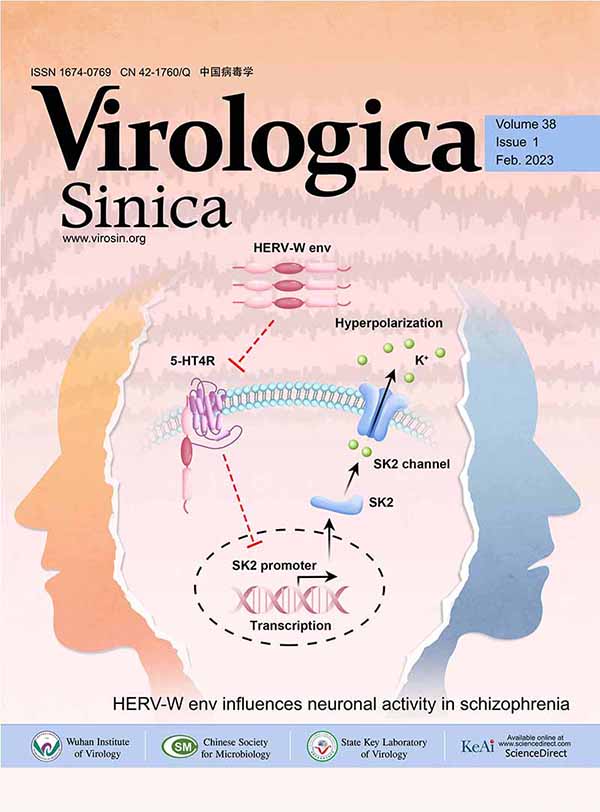NING Zhang-yong, ZHAO De-ming, YANG Jian-min, ZHOU Xian-mei, YU Bo, KONG Xiao-ming and YIN Xiao-min. The Impact of PrP106-126 on Prion Gene Expression of Cultured Neurons[J]. Virologica Sinica, 2006, 21(6): 609-613.
Citation:
NING Zhang-yong, ZHAO De-ming, YANG Jian-min, ZHOU Xian-mei, YU Bo, KONG Xiao-ming, YIN Xiao-min.
The Impact of PrP106-126 on Prion Gene Expression of Cultured Neurons .VIROLOGICA SINICA, 2006, 21(6)
: 609-613.
多肽PrP106-126对培养神经细胞朊蛋白基因表达的影响
-
宁章勇
1,2
,
-
赵德明
,
,
-
杨建民
2
,
-
周向梅
2
,
-
孔小明
1
,
-
尹晓敏
1
,
-
摘要
:神经细胞是传染性海绵状脑病(transmissible spongiform encephalopathies, TSEs)的重要靶细胞,PrP106-126是研究TSEs致病机理的理想工具,对PrP106-126作用的培养神经细胞模型进行研究,有利于了解朊蛋白的功能和探讨TSEs的分子致病机制。本研究利用PrP106-126构建了大脑皮质和小脑颗粒神经元作用模型,对神经细胞的存活和朊蛋白基因的表达进行了研究。结果表明:PrP106-126作用于培养神经细胞导致其存活率的显著下降;大脑皮质神经元经PrP 106-126处理后,与SCR处理组和对照组相比,基因表达的量明显下降,处理后的小脑颗粒神经元也有类似的情况出现,两者之间下降的幅度和时间不同。我们的研究结果为研究朊蛋白在TSEs发生中的作用和深入了解TSE的分子致病机制提供了基础数据。
The Impact of PrP106-126 on Prion Gene Expression of Cultured Neurons
-
1.
1. College of veterinary medicine, South China Agricultural University, Guangzhou 510642,China
-
2.
National Animal Transmissible Spongiform Encephalopathies Laboratory, China Agricultural University, Beijing 100094, China
-
Corresponding author:
ZHAO De-ming,
-
-
Abstract
The polypeptide fragment PrP106-126 of the cellular prion protein was utilized to construct the model of cultured cortical neurons and cerebellar granule cells. The model was used to study the viability of neurons and PrP gene expression. The results showed that the viability of cortical neurons and its PrP gene expression decreased significantly after incubation with PrP106-126, compared with that of the SCR-treated group and the control group. Similar results were obtained for treated cerebellar granule cells but with different extent and time phases. These findings provided relevant base-line data for understanding the function of the prion protein in diseases and for further studies of molecular pathogenesis of TSE.
-

-
References
-
Proportional views

-
-














 DownLoad:
DownLoad: